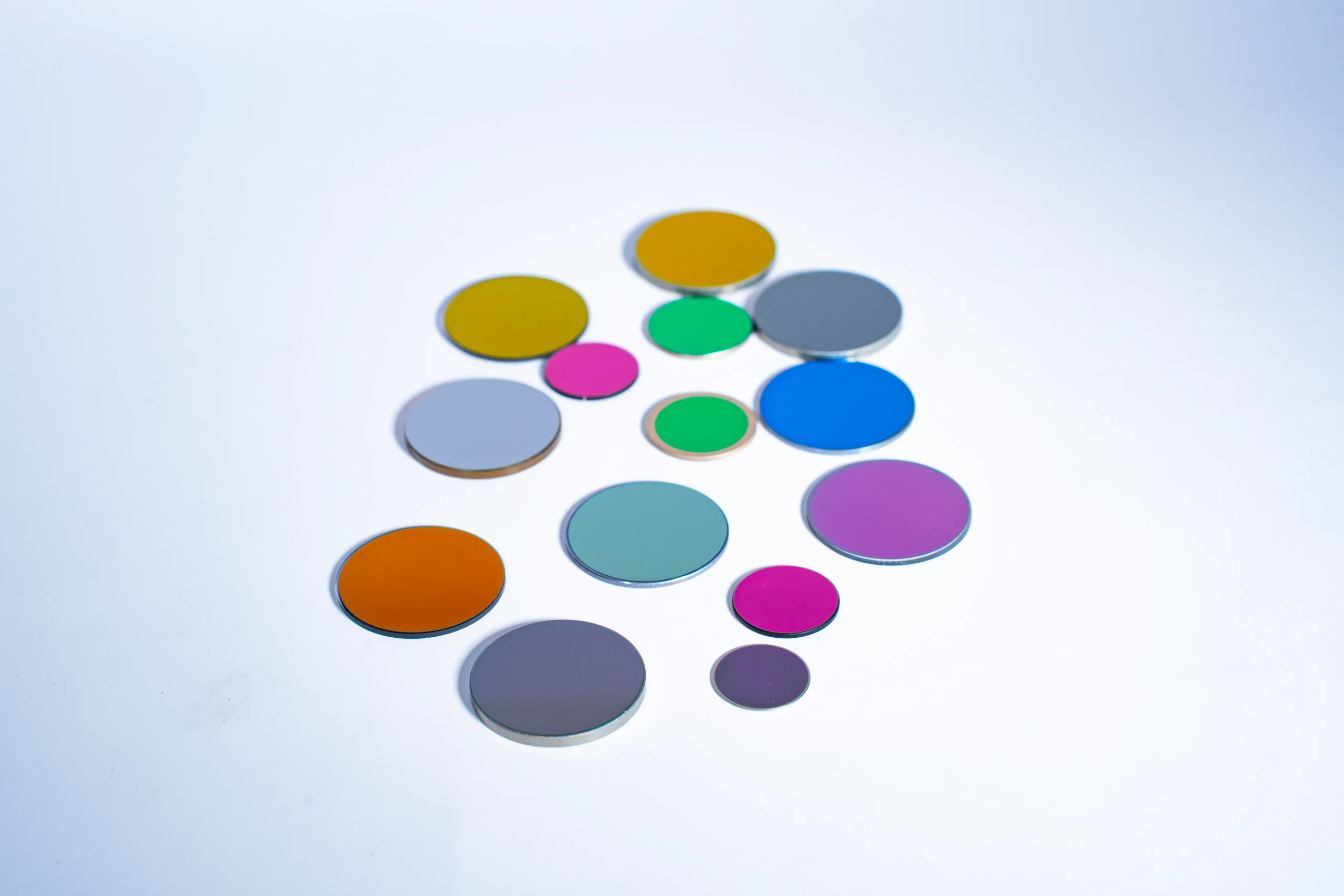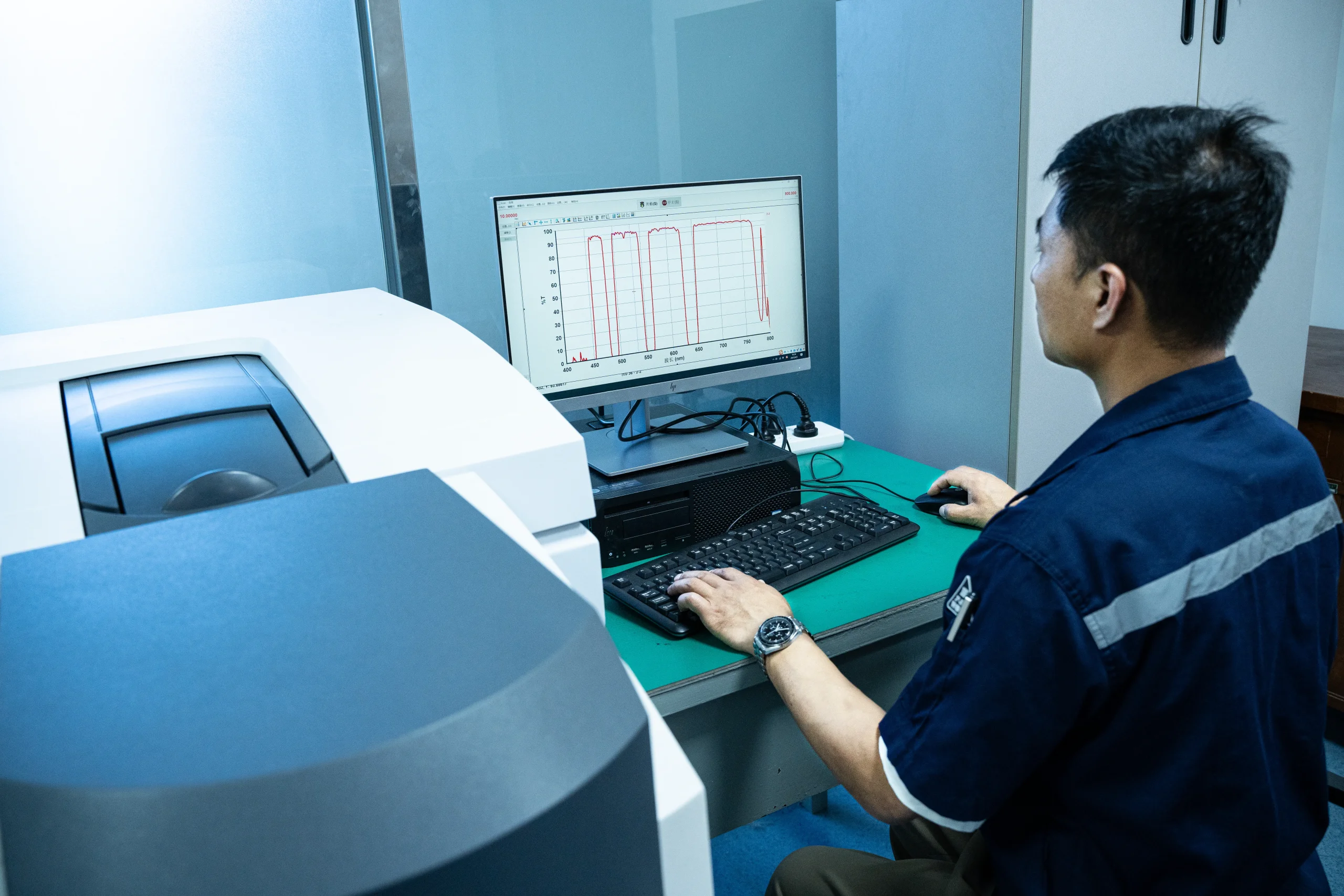Boost O₃gas detection accuracy with high-performance infrared filters. Designed for 9.6 µm precision, they enhance sensitivity, reduce noise, and ensure reliable monitoring in industrial, environmental, and medical applications.
Understanding Infrared Filters and Their Importance in Gas Detection
For O₃ detection, infrared filters target the 9.6 µm light band where ozone absorbs light. This helps systems find even tiny bits of ozone. Narrowband filters are extra picky, letting only the right light through. This cuts down on mistakes from other gases. Bodian’s filters have awesome narrow bands and let through over 90% of the right light, making ozone detection super precise.
Why Filters Matter:
- They help systems spot ozone fast.
- They keep other gases from messing up results.
- Bodian’s filters work great in all kinds of places.
The Advantages of High-Performance Infrared Filters in O₃ Gas Detection
1. Enhanced Sensitivity and Accuracy
High-performance infrared filters make O₃ detection systems super sharp. Ozone grabs light at 9.6 µm, and these filters focus right on that spot. This lets systems find even small amounts of ozone. It’s really important for checking air quality or keeping workers safe.
Bodian’s filters have ultra-narrow bands and strong cut-offs (OD3 or customization). They make sure systems spot ozone clearly, even when other gases are around. This accuracy helps follow safety rules and keep people healthy.
Accuracy Tips:
- Pick filters that hit the 9.6 µm mark exactly.
- Use Bodian’s filters for super clear results.
- Check your system to make sure it matches the filter.
2. Reduced Interference and Noise
Gas detection systems often work where lots of gases mix. Gases like carbon dioxide or nitrogen dioxide can have light bands close to ozone’s. This can mess up readings. High-performance infrared filters fix this by only letting ozone’s light through. This cuts out noise from other gases.
Bodian’s filters are great at blocking extra light. They keep systems accurate, even in busy places like cities or factories. This means fewer wrong alerts and safer work.
Noise Reduction Tips:
- Choose narrowband filters to avoid other gases.
- Test filters in tough spots to check performance.
- Ask Bodian for filters that block extra light well.
3. Increased Durability and Longer Sensor Life
High-performance filters don’t just make systems accurate—they also make them last longer. They protect sensors from too much light or harsh weather. This cuts down on wear and tear, so sensors keep working for years.
Bodian uses top-notch coating tricks to make filters tough. They can handle hot, cold, or wet conditions, like in factories or outdoor air stations. This keeps your system running strong.
Durability Tips:
- Pick filters with coatings to fight moisture.
- Check if filters can handle hot or cold temps.
- Store filters in a dry place when not in use.
4. Improved Signal-to-Noise Ratio (SNR)
A good signal-to-noise ratio (SNR) means clear, trusty measurements. High-performance infrared filters boost SNR by letting only ozone’s light through. This makes readings sharper, even in places with lots of light changes or other signals.
Bodian’s filters have high transmittance (over 90%) and sharp cut-offs. This makes ozone readings super clear and reliable, no matter where you use the system.
SNR Tips:
- Look for filters with high light passing (90%+).
- Use Bodian’s filters for clear signals.
- Test your system in busy spots to check SNR.
Extra Benefits
- Filters are easy to clean and keep working well.
- They fit into different system sizes and setups.
- Bodian tests every filter to make sure it’s awesome.
- They help systems use less power for longer use.
Applications of High-Performance Infrared Filters in O₃ Gas Detection Systems
High-performance infrared filters are used in lots of places where spotting ozone is key. They help keep people safe and the air clean.
1. Environmental Monitoring
Groups that check air quality use O₃ detection systems to watch ozone levels. High-performance filters help these systems spot even tiny bits of ozone. This is super important for following air quality rules and keeping people healthy.
Bodian’s filters make sure systems give accurate readings. They help cities or parks know when ozone levels are too high, so they can take action fast.
Environmental Examples:
- Cities use filters to check air pollution.
- Parks track ozone to protect plants and animals.
- Bodian’s filters help systems stay accurate.
2. Industrial Safety
Factories, like those for water treatment or chip-making, can make ozone as a side effect. Too much ozone can be risky for workers. High-performance filters help systems spot ozone quickly, so workers get warnings if levels get high.
Bodian’s filters work great in tough factory settings. They keep systems running right, even with lots of other gases or light changes.
Industrial Examples:
- Water plants check ozone during cleaning.
- Chip factories watch for ozone leaks.
- Bodian’s filters keep workers safe.
3. Healthcare and Medical Applications
Ozone is sometimes used in hospitals for things like cleaning wounds or killing germs. But too much ozone can be harmful. High-performance filters help medical systems measure ozone exactly, so treatments are safe.
Bodian’s filters make sure these systems accurate. This keeps doctors and patients safe during ozone treatments.
Healthcare Examples:
- Hospitals use filters for safe ozone therapy.
- Labs check ozone in air for clean rooms.
- Bodian’s filters help keep treatments safe.
4. Research and Development
Scientists use O₃ detection systems to study things like climate change or chemical reactions. High-performance filters give them clear, accurate data. This helps them learn more about ozone’s role in the air or experiments.
Bodian’s filters are trusty for research. They work well in labs and give scientists the right numbers every time.
Research Examples:
- Scientists study ozone in the sky.
- Labs test ozone in chemical experiments.
- Bodian’s filters help get true results.
More Applications
- Farming: Check ozone in greenhouses for healthy plants.
- Cars: Test exhaust gases for cleaner air.
- Schools: Monitor air quality for kids’ safety.
- Weather Stations: Track ozone for climate studies.
Choosing the Right Infrared Filter for O₃ Gas Detection
Picking the perfect filter for O₃ detection means thinking about a few key things. Here’s what to consider.
1. Wavelength Range and Bandwidth
Choose a filter that hits ozone’s 9.6 µm light band exactly. A narrow bandwidth keeps other gases from messing up readings. Bodian’s filters are made to focus right on this spot for super clear results.
2. Cut-Off Depth and Transmittance
A strong cut-off (OD3 or customization) blocks unwanted light. High transmittance (over 90%) lets enough light through for good detection. Bodian’s filters are awesome at both, making systems work better.
3. Material and Environmental Stability
Filters need to be tough for rough places like factories or outdoor stations. Bodian uses materials like germanium or silicon that handle heat, wet air, or chemicals. This keeps filters working great for a long time.
4. Customization Options
Sometimes, you need a filter made just for your system. Bodian can make filters with special sizes, wavelengths, or coatings. This makes sure the filter fits your gear perfectly.
Conclusion
High-performance infrared filters are super important for O₃ gas detection systems. They make systems more accurate, cut out noise, and last a long time. By picking the right filter, you can make sure your system spots ozone fast and keeps people safe. Bodian’s filters are top-notch, with over 40 years of know-how behind them. They help in factories, hospitals, research labs, and more. With Bodian’s filters, your O₃ detection system will work great and keep everyone safer.
Want awesome high-performance infrared filters for O₃ detection? Contact Bodian for catalogs, prices, or custom options.
FAQ
Q1. What is an infrared filter, and how does it work?
A: An infrared filter lets certain infrared light waves through and blocks others. In O₃ detection, it focuses on light that ozone soaks up, making measurements clear and accurate.
Q2. How do infrared filters improve the accuracy of O₃ gas detection?
A: They focus on ozone’s special 9.6 µm light band. This helps systems spot even tiny amounts of ozone without other gases getting in the way.
Q3. What factors should I consider when selecting an infrared filter for gas detection?
A: Think about the light range, how much light it lets through, how tough it is, and if you can customize it. Bodian helps you pick the perfect filter for your system.



